In celebration of International Women’s Day on March 8th, our blog this week is the 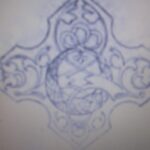 first in a series on the unmarked contributions of early women writers to the history of Scottish children’s literature. Today it’s the turn of the prolific Jessie Margaret Edmonston Saxby (1842-1940) who transposed the Victorian boys’ adventure story to the Shetland islands, where she was born, and invented beautiful worlds of fairytale wintriness in her poetry and short stories for younger children…
first in a series on the unmarked contributions of early women writers to the history of Scottish children’s literature. Today it’s the turn of the prolific Jessie Margaret Edmonston Saxby (1842-1940) who transposed the Victorian boys’ adventure story to the Shetland islands, where she was born, and invented beautiful worlds of fairytale wintriness in her poetry and short stories for younger children…
♦
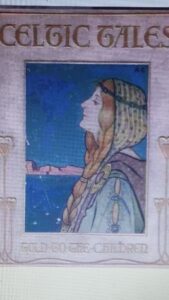
J.K. Rowling is the inheritor of a neglected tradition. From the early nineteenth century onwards, women have written children’s literature in Scotland but their books, and their lives, have largely been forgotten. Scottish women have also played a significant role as the illustrators and designers of children’s books — Jessie M. King (1875-1949), for example, who created images for Oscar Wilde’s fairy tales, among many other works of fantasy and fairytale, or the less well-known Katherine Cameron (1874-1965) who produced illustrations for Charles Kingsley’s The Water Babies as well as for collections of Celtic ballads for children. And for centuries, of course, they have been the transmitters and inheritors of oral tradition and its wealth of ballads and folktales who are occasionally remembered as the nurses, (grand)mothers, or sisters acknowledged by nineteenth century folktale collectors and antiquaries. Robert Louis Stevenson was grateful to his nurse Alison Cunningham for sharing her storehouse of stories and lore.
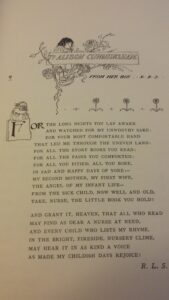
Scottish women writers also played a role in the emergence of the literary fairy tale in print at the turn of nineteenth century in Britain (as opposed to the longer chapbook tradition or transcribed collections of folktales and ballads). Catherine Sinclair (1800-64), for example (who has a commemorative monument to her in North Charlotte Street in Edinburgh) published Holiday House. A Series of Tales in 1839. This was innovative in its presentation of two orphaned siblings as ‘two of the most heedless, frolicsome beings in the world’. Harry and Laura (who is Alice-like in her insatiable ‘curiosity’ for things) are often disobedient, unruly, and untidy — but their wholly child-like spirit for play and freedom is not chastised in conventional moralistic fashion. Even the fairy tale encased within the realist narrative is wry and funny and dark at the same time.
And because equality is not just for one day, SELCIE will be introducing many more female poets, novelists, short-story writers, and artists for children as we work towards our 2018 exhibition!
♦
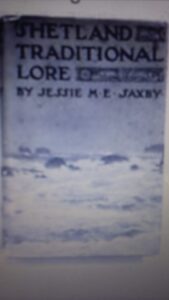
¶ Jessie Saxby wrote prolifically across seven decades. Like Sinclair, she, too, is a writer of fairy tales but also a poet, folklorist, and — in strikingly prolific ways — the creator of popular boys’ adventure stories. Her work is hallmarked by the place of her birth, Halligarth in Unst, Shetland. As Mark Smith points out in his study of Shetland’s literary culture, she is its ‘first professional writer’.[i] But hers was from the start was a position of considerable social and cultural privilege, enjoying access to sources of cultural power and patronage in a way that other Shetlandic writers could not.
One of eleven children, her father Laurence Edmonston was a doctor but also an ornithologist and natural history writer; whist her mother recorded tradition, custom, wildlife in a collection called Sketches and Tales of the Shetland Islands (1856).[ii] Saxby shared a love of natural history, geology, and wildlife with one of her brothers, Thomas, who published the Flora of Shetland in 1845 when she was only three; and this can be glimpsed in some of the lyrical first-person descriptions of the heroine’s ‘child-life’ in her novel Rock-Bound: A Story of the Shetland Isles (in accounts of her rock-climbing; and the ways in which ‘I listened to the sea and the sea talked to me’).

¶ Saxby published her first book in 1860, Lichens from the Old Rock, when she was eighteen. This was an eclectic collection which included ballad-style narratives and poetry about changelings, birds of omen, ‘the maidens and children of ancient Denmark’, the Aurora Borealis, and a rare shell discovered in the Shetlands. But much of her subsequent creative life was fuelled by the necessity to care for a family of five young sons (a daughter had died in infancy) whilst living in Edinburgh, after the early death of her husband, Henry Linckmyer Saxby (1836-1873). Like her parents’ house in Halligarth, Saxby’s home seems to have become a hub of creative and artistic life. (Saxby also collaborated with another Edinburgh woman writer, Annie Shepherd Swan (1859-1943), a writer of hugely popular romantic fiction).
¶ Saxby was astute in the way she carved out the trajectory of her writing career, swiftly realising the commercial potential of boys’ popular adventure stories. These were frequently published in periodicals and journals for boys (the Museum of Childhood’s archives holds many of these!), and by London publishing houses. 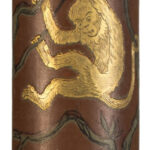 This was, after all, the era of Stevenson, R.M. Ballantyne, and H. Rider Haggard.
This was, after all, the era of Stevenson, R.M. Ballantyne, and H. Rider Haggard.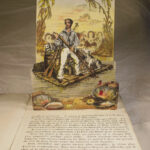 These were often imaginatively brilliant and idiosyncratic visions but the genre as a whole often catered to the desire for a particular kind of masculinity. Adventures which trained boys to exercise courage, manliness, and spirit through the ‘imaginative geography of adventure’ (a terrain from which girls were largely excluded)[iii] readily found readerships in a marketplace in which children’s fiction was (in part) segregated by gender. This was a world of hero-worship, imperialism, and muscular Christianity.[iv]
These were often imaginatively brilliant and idiosyncratic visions but the genre as a whole often catered to the desire for a particular kind of masculinity. Adventures which trained boys to exercise courage, manliness, and spirit through the ‘imaginative geography of adventure’ (a terrain from which girls were largely excluded)[iii] readily found readerships in a marketplace in which children’s fiction was (in part) segregated by gender. This was a world of hero-worship, imperialism, and muscular Christianity.[iv]
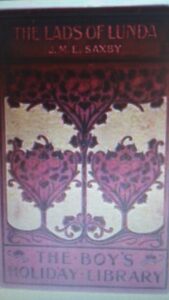
Adventures in Shetland Saxby was clearly conscious of the ideological allure of Empire and Frontier in the boys’ fiction market. One of her novels alludes to the ‘romance-hallowed regions of Robinson Crusoe and Mungo Park’ (The Lads of Lunda, p. 127); and the Boys Own Paper, in which Saxby regularly published, was partly ‘stimulated’ by real-life accounts of Mungo Park and David Livingstone.[v] But Saxby’s boys’ stories are singularly imaginative because her boy-heroes mostly navigate the terrain and topography of the Shetland archipelago. Their masculinity is tested and formed by encounters with whales and other wild-sea creatures; with navigating the wild seas, crags and reefs around the islands — dangerously so in The Lads of Lunda (1887) where the young sea-adventurers have their mettle tested and masculine courage proven by singing a sea-ballad ‘set to a fine old Shetland tune’ (p. 132).
Once upon a time there were the Vikings… Being a Shetlandic boy-hero also involves connecting with a distinctive Viking heritage. In Viking Boys (1892), the fifteen-year old Yaspar dreams of ‘the olden days, when his native Isles were the haunts of Vikinger, whose ships were for ever winging their way over those waters bearing the spoils of many a stormy fight’ (p. 1), and whose heroic masculinity is to be admired and emulated. Saxby’s fictions have a lineage in the Victorian fascination for the Vikings, as Andrew Wawn has shown in The Vikings and the Victorians (2000). The romance and ideology of ‘old northernism’, in which the ancient Norse kingdoms of Shetland and Orkney play a special part, is shown to take root in a young boy’s fascination for the men, and their culture, who once upon a time inhabited his islands — through some verses sung obligingly by a friend, a would-be Viking scald, he imaginatively assumes a place within that world:
See, young Yaspar’s eye is blazing,
With the fires so fleet and free:
Come of Magnus, yarl and sea-king,
Son of Norland scald is he:
Well he knows the gruesome story
Of that evil-omened bird,
And of trows and vengeful demons
He hath dreamed and he hath heard.
But his heart is hot and steadfast,
And his hands are strong to try;
He will dare with fiends to combat –
He will dare, and he will die (p. 186)
Except that one day Yaspar nearly drowns, only to be rescued with the help of his faithful dog-companion, Pirate, and returned to the protective safety of home. He is chastened, wiser, but still inspired to grow up to become fine ‘comrade’ and a ‘finer leader’ (p. 240).
More than one kind of masculinity Saxby’s imperialist matrix of masculinity — fuelled by the ideologies of empire, war, romance, and a fusion ‘British’ values, ‘northern Vikingness’, and evangelical Christianity – makes much of her boys’ fiction historically specific as well as problematic. But in other ways — and in the other children’s genres in which she wrote — Saxby seemed to find more freedom. In the story of ‘Tommy-Kitten’, for example, published in the collection, Snow Dreams, or funny fancies for little folks (1882), the titular boy-hero is a model of kindness, compassion, and creativity; his one ‘failing’ is being afraid of the dark but even this he overcomes.
The masculinities of Saxby’s children’s writing are therefore not just heroic and imperialist. Strikingly we see portrayed throughout her work the deep, enduring, and tender ties between mothers and sons. Femininity itself is often seen as redemptive — Yaspard sings his nurse’s lullaby when he fears his life is in danger; and the sea-ballad sung by the imperilled boys in The Lads of Lunda has been learnt from one of their mothers! And almost all her children’s fiction was dedicated to her sons, either collectively or individually, who are also often woven into her stories too by name.
Northern worlds Saxby is also a ‘northern’ children’s writer in other ways. Above all, perhaps, Saxby has a particular writerly gift for evoking the idea of wintriness — ‘the Norland wind’ that blows through many of her stories. This is especially the case in the Snow Dreams volume whose stories of snow-spirits gently evoke the ice-fettered worlds of Hans Christian Andersen.  The idea of winter ritual and seasonality also runs through these tales through the child protagonists’ commemoration of the ‘Yule’ celebrations distinctive to Shetland, and then Christmas itself.
The idea of winter ritual and seasonality also runs through these tales through the child protagonists’ commemoration of the ‘Yule’ celebrations distinctive to Shetland, and then Christmas itself.
There is northern, and distinctively Shetlandic, folklore too — in the collection Daala-Mist (1876), ‘dedicated to my Boys’, there are stories about mermaids and trows (creatures akin to fairies who live in Shetland, particularly fond of fiddle music); and in the tale of two Shetland Giants, each of whom falls in love with the same woman (a mermaid, of course). In another tale, ‘The Giant’s Pie’, the giant’s wife is called the ‘Guy-karl’. This evokes the ‘Gyre-Carling’ of traditional belief: a huge, demonic old woman [carling/carline means an old woman; from Norse ‘kerling’), frightening in the way of folklore and myth’s old women, such as the Russian child-eating Baba-yaga. In a gentler context, the tale of a lonely young sea-bird uses the Orcadian and Shetlandic term for a young gull, ‘Scorie’.
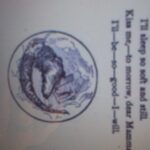

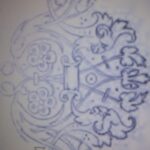
♦
Jessie Saxby was a diverse and eclectic children’s writer who combined tradition and popular culture in her work; however ideologically and politically mixed the results might sometimes be, she deserves to be remembered — not least for the ways in which she made imaginative room in children’s literature for local and unique cultural spaces and places.
This post was written by Sarah
[i] See Mark Ryan Smith, The Literature of Shetland (Shetland Times Ltd, 2014).
[ii] See Brian R. Smith’s entry for ‘Jessie Margaret Edmonston Saxby’, in the Oxford Dictionary of National Biography; and
[iii] Richard Phillips, Mapping Men and Empire. A geography of adventure (Routledge, 1997), p. 93).
[iv] Cf. Helen A. Fairlie, Revaluing British Boys’ Story Papers, 1918-1939 (Palgrave Macmillan, 2014).
[v] Elleke Boehmer, Colonial and Postcolonial Literature: Migrant Metaphors (OUP, 2005).



A wonderful post. I live in the house in Newington where Jessie Saxby spent her Edinburgh years (I only found out recently – thanks to the great work of our local historian). It sounds strange, but in reciting her verse I can sense the house responding.
Note correct email below.
Hi Christopher – I’m researching for a biography of JMES and would be interested to hear more about where you live and what your local historian has dug up. I’ll also have lots of information for you, no doubt.
Hello Philip – many thanks for your comment. How good to hear you’re writing a biography of Jessie – long overdue. I will pass your contact details onto Christopher. Hope this connection will unearth new information for you!